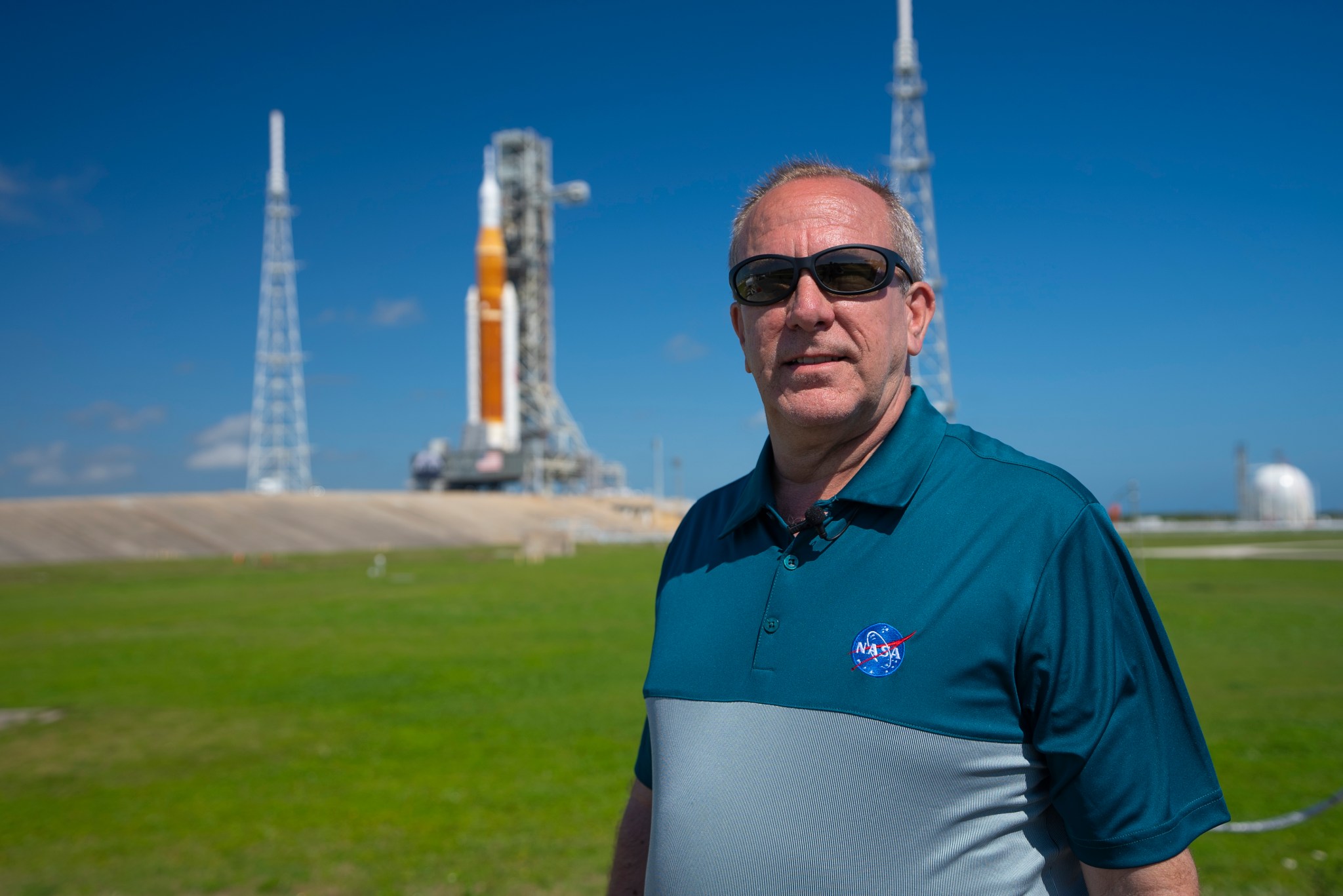By Rick Smith
NASA engineer David Beaman thinks like a chess grandmaster, always three or four moves ahead. He oversees 1,000 or so team members — all of them working to fly America’s next deep space rocket and return human explorers to the Moon on the Artemis missions.
Beaman is manager of the Space Launch System (SLS) Engineering & Integration Office at NASA’s Marshall Space Flight Center in Huntsville, Alabama. As NASA works to deliver the SLS — the first Moon rocket built for humans since the Apollo era, and the most powerful ever built — his office provides a full range of engineering oversight and integration solutions serving NASA space science and exploration missions.

And the chess analogy is no accident; Beaman and his team are always thinking multiple steps ahead, juggling a variety of pieces and countless potential interactions. “We’re responsible for overall requirements and processes for the entire SLS rocket — how they’re implemented at every stage, from design to launch, and how they flow between the element level and the integrated launch vehicle, including the Orion crew vehicle, engineering ground systems and the rocket itself,” he said.
The Engineering & Integration Office conducts hardware and systems analysis for each piece of the rocket — and will do so for the integrated launch vehicle during final checkout and launch preparations. The organization also develops all SLS flight software. Some 300 people in Marshall’s Systems Integration Laboratory conduct exhaustive software modeling and simulation work, Beaman said, “testing vehicle safety margins, putting the rocket through its paces with different launch windows, trajectories and payload mass.”
The team works with operations and ground teams at NASA’s Johnson Space Center in Houston and Kennedy Space Center, Florida, to ensure proper communications between elements and with controllers on the ground. They plan and oversee flight configurations for each launch — countless combinations of mass, hardware, crew, mission and operational constraints. Beaman — who managed the solid rocket boosters for the final 22 space shuttle missions and knows very well how one vehicle element fits into a much bigger picture — likened the task to planning long journeys here on Earth.
“You have a truck that carries 5 tons of sand,” he said. “Your mission is to haul the load from Alabama to Boston. How long is the trip? How often do you need to refuel? How many drivers are needed? Just as all those factors amount to a successful trip, we execute our mission not just by building and flying a safe, reliable rocket, but by factoring in all those operational constraints. This is the very heart of the process.”
Beaman, who grew up in Huntsville, gets his passion for space from his father, Robert Beaman, an early Apollo engineer who helped build the Saturn rockets that carried the first Americans to the Moon. The elder Beaman retired from NASA in 1997 as Marshall’s chief engineer — leaving his son to carry on his legacy.
More about David Beaman
Beaman earned a bachelor’s degree in electrical engineering in 1990 from the University of Alabama in Huntsville. Prior to joining NASA in 2000, he was a contractor supporting U.S. Army research and development programs at Redstone Arsenal in Huntsville. In 1990, he accepted a position with United Technology and later with United Space Alliance, both of Huntsville, supporting NASA’s Advanced Solid Rocket Motor Program and the Solid Rocket Booster Project.
He was an integral member of Marshall’s Space Shuttle Program, leading various offices from 2002 to 2011. When the shuttle program ended in 2011 and NASA began building SLS, Beaman was named manager of Marshall’s Spacecraft and Payload Integration Office. Marshall Director Jody Singer asked him to assume his current role in 2019.
Beaman is a 2004 recipient of the NASA Medal for Exceptional Achievement, and a 2005 Space Flight Awareness honoree in 2005 for his dedication to quality work and flight safety. He and his wife Mishele live in Meridianville, Alabama. They have two grown sons, Zack and Seth.
Learn more about NASA’s Space Launch System at:



























